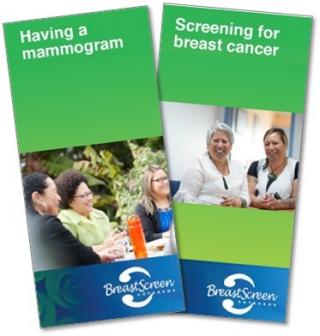- Home
- News
- Screening Matters, Issue 59, August 2017
- New BreastScreen Aotearoa resources for women
News
- Screening Matters Newsletter
- April 2019
- April 2018
- December 2017
- August 2017
- April 2017
- December 2016
- October 2016
- March 2016
- November 2015
- August 2015
- June 2015
- April 2015
- February 2015
- December 2014
- October 2014
- August 2014
- June 2014
- April 2014
- February 2014
- December 2013
- October 2013
- August 2013
- June 2013
- April 2013
- February 2013
Screening Matters
The National Screening Unit newsletter
In this issue:
- Engaging Māori wāhine in conversations: BreastScreen Counties Manukau
- Breast screening booklet demystifies mammograms: Northland DHB
- First District Health Boards start bowel screening
- Delivering quality screening and audiology services for babies
- Launch of Time to Screen social marketing programme
- New BreastScreen Aotearoa resources for women
- Breast and cervical screening support services for Otago and Southland
New BreastScreen Aotearoa resources for women

Screening for breast cancer: Joining BreastScreen Aotearoa (HE1210): this focuses on giving women the information they need to make an informed decision about joining the screening programme. It will replace the general pamphlet in GP offices and at health promotion events and be made available online and at screening clinics.
Having a mammogram (HE10102): this resource is for women attending their screening appointment and offers detailed information about what they should expect at their appointment. This pamphlet will be sent to all women when they make an appointment with BreastScreen. We are also developing another pamphlet which is a shorter version for women who have already had a screening appointment through BreastScreen Aotearoa. This resource will have just the information women need to prepare for their appointment, such as what to wear and what to bring.
You can order the resources from www.healthed.govt.nz (please note: printed copies of HE1210 will be back in stock in early September).
The resource review involved consultation with women, especially Māori and Pacific women, and with advocacy groups and breast screening service providers, as well as looking at what is done internationally.
Our review found there was too much information in the main pamphlet (which is sent to all women prior to their screening appointment) and it wasn’t being read. In the new resources we have reduced the information to what women need for where they are in the breast screening pathway.
Both pamphlets were tested with focus groups, including the concepts and language, as well as how likely women were to pick up and read the resources. We wanted to make sure information was balanced, clear and helped women to understand what would happen during screening and why.
We know that printed resources will only ever be one part of the wider conversation women have about screening. The conversations that women have with health professionals are often the best source of information about screening and these new resources are designed to support these.
We are also working to redevelop the other resources, including resources for Māori and Pacific women, detailed information about breast screening, resources for other points of the screening pathway, and resources translated into other languages. Look out for these throughout the rest of this year.
To receive the Screening Matters newsletter by email, fill out our sign-up form.

